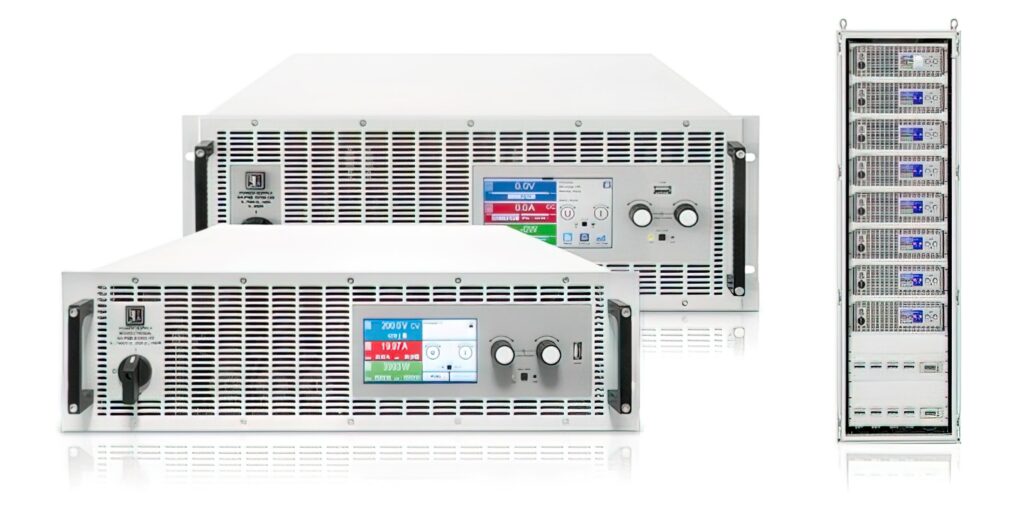Cell test systems do double duty

(Courtesy of EA Elektro-Automatik)
EA Elektro-Automatik in Germany has launched a series of bidirectional DC power supplies and regenerative DC loads for testing fuel cell stacks (writes Nick Flaherty).
Fuel cells are characterised by determining their electrical resistance, and the performance is usually indicated via polarisation curves by measuring the voltage and current. A durability test after a fuel cell stack reaches operating conditions requires a continuous series of charge-discharge cycles to ensure it will work safely and reliably in the field.
EA Elektro-Automatik has launched DC power supplies and an ELR series of electronic loads that can sink up to 30 kW and feed the energy back to the grid to enable testing of any size of fuel cell stack.
The two-quadrant PSB series can function as both a source and a load. As a load, both the PSB supplies and the ELR loads are regenerative, and can return the absorbed power to the grid with more than 96% efficiency.
That significantly reduces the cooling requirements on the instrument. Less cooling allows a smaller instrument for a given power capacity to be used, and saves on power consumption costs. Fan noise is also significantly reduced.
Both the power supplies and the electronic loads have built-in function generators that include arbitrary waveform generation, which simplifies characterisation, performance and durability testing of fuel cells. Unlike other loads that need a separate AC instrument, an ELR load has a built-in waveform generator that can perform the perturbation test to determine fuel cell resistance.
Both the power supplies and the ELR loads, with their built-in waveform generators, can also subject the fuel cell under test to dynamic load variations for performance and durability testing.
The power supplies also have an internal X-Y generator that allows the supply to simulate the output of a fuel cell. At various voltages, the DC power supplies can vary their output resistance to generate a current characteristic of the fuel cell at the programmed voltage.
This allows the supplies to emulate the three phases of a fuel cell’s characteristic output, adding ripple and noise to the output to determine how well a fuel cell-powered device can perform under a wide range of conditions.
Both the series supplies and the ELR loads offer true auto-ranging performance. The power supplies have a constant power characteristic output that allows for a wider range of voltage and current output with one instrument.
The supplies can have ranges from 0-60 V up to 0-2000 V. Current outputs can be up to 1000 A at 30 V with the 30 kW supply. Similarly, the ELR loads can sink up to 2000 V or 1000 A with the 30 kW load.
Auto-ranging power supplies and loads enable users to obtain higher voltages and currents without having to oversize the supply or the load. Thus, one instrument provides a wider range of testing capacity and versatility for use in multiple test applications. The power supplies and ELR loads save test costs and test rack space compared with fixed-range instruments.
The PSB series supplies and the ELR loads have USB and Ethernet interfaces as standard. Furthermore, a number of optional interfaces allow control from a PC or a programmable controller. Some of the optional interfaces include RS-232, Profibus, CAN bus, and ModBus. With the CAN interface, the instruments can interface to an automotive control system.
ONLINE PARTNERS































